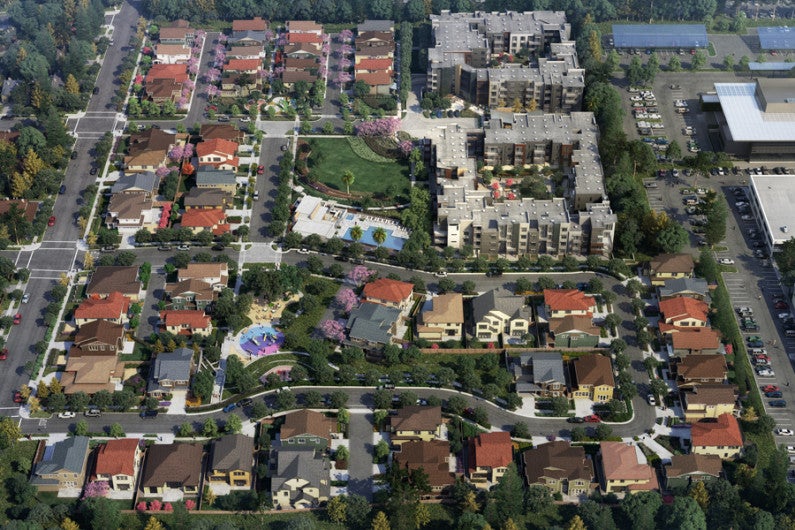University Terrace project’s remaining environmental issues addressed
The state Department of Toxic Substances Control is satisfied that Stanford's plans to mitigate TCE exposure at the University Terrace housing development are sufficient to ensure no significant health risk to residents. The finding enables construction work on much-needed faculty housing to continue.
A positive finding from the California Department of Toxic Substances Control (DTSC) means that Stanford has cleared one of the last remaining hurdles to the continuation of construction of new homes in the University Terrace development on California Avenue.
That’s welcome news for eligible faculty members and their families who have been stymied in home purchases by the Bay Area’s challenging housing market. At this point, there is interest in the housing from more than 180 faculty families, according to Jan Thomson, director of faculty and staff housing. The homes will be offered for sale, based on an order decided by lottery, at prices discounted by ground-lease restrictions.

When built out, Stanford’s University Terrace project will provide much-needed housing for faculty members and their families. (Image credit: Transparent House)
University Terrace, which is bordered by the College Terrace neighborhood to the west, Peter Coutts townhouses to the south and the Stanford Research Park to the east and north, will comprise 180 new homes, including single-family homes, duplexes and condominiums. The first homes will be available to faculty in mid-2017.
Part of the construction was temporarily slowed as Stanford sought approval from state agencies on a Supplemental Investigation and Risk Assessment Report (SIRA) that evaluated the presence of low levels of polychlorinated biphenyls (PCBs) and trichloroethene (TCE). These chemicals are commonly found in the Bay Area at former commercial or industrial sites where manufacturing or research once occurred. The chemicals were anticipated to be present at this property when the housing was approved by the city of Palo Alto in 2005.
The DTSC recently reviewed extensive testing data and scientific analysis of the site, as well as Stanford’s plans as outlined in the SIRA to address any possible health risks for future residents.
The PCBs have already been removed from the University Terrace site. Stanford’s SIRA also proposed redesign of part of the development to move homes away from localized areas where elevated levels of below-grade TCE soil vapor were found. Given the depth and density of the soil where TCE was found, exposure to resulting vapors is highly unlikely. Nevertheless, the university will place up to 15 feet of clean and compacted soil over those areas as additional mitigation. It also will install protective vapor barriers underneath houses. Only open space and roadways, as opposed to homes, will cover the areas found to have elevated levels of deep TCE soil vapor, which dissipates to ambient levels in open air.
In a letter to Annette Walton, director of environmental management in Stanford Real Estate Operations, the unit chief of the DTSC Berkeley office reported that the agency “agrees that sufficient site characterization has been performed to define the nature and extent of contamination present at the site, and agrees that there would be no significant risk to future site residents, based on the future redevelopment plans …”
The DTSC, however, requires Stanford to return for additional approval if it plans to vary from mitigation proposals contained in the SIRA or anticipates further excavation in the area.
Stanford must next present the revised location of some of the homes to the city of Palo Alto, which has final approval of the subdivision map, according to Jean McCown, associate vice president for government and community relations.
